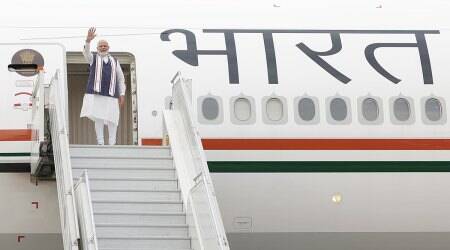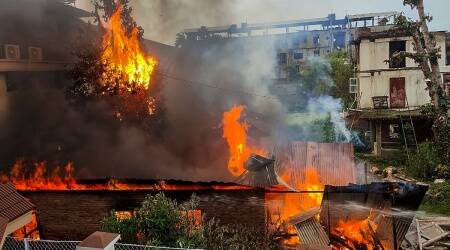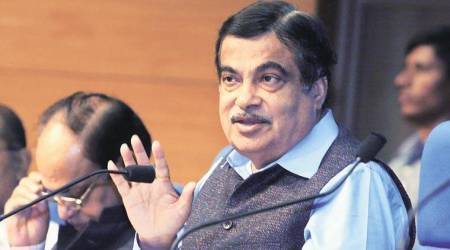Reels to rallies, how a support group worked to halt deportation of Indian students from Canada
On June 14, the 18th day of the protest, the unthinkable happened. Canada's Federal Immigration Minister, Sean Fraser, announced that all deportations in such cases would be halted, and a task force would be established to review each case.
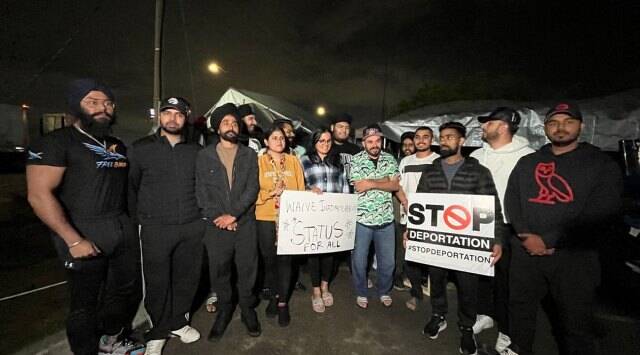 The NSN, a two-year-old Greater Toronto Area (GTA) group that mobilises students and advocates for their rights played a pivotal role in the 18-day protest that ultimately forced the Canadian government's hand. (Photo credit: NSN Peel)
The NSN, a two-year-old Greater Toronto Area (GTA) group that mobilises students and advocates for their rights played a pivotal role in the 18-day protest that ultimately forced the Canadian government's hand. (Photo credit: NSN Peel) The night of May 28 was filled with self-doubt. All legal options had failed and a group of Indian international students, caught in a fraudulent documents case, were facing imminent expulsion from Canada. A round-a-clock dharna with the affected students – around three dozen of them who were set to be sent back to India, and many more who were victims of the fraud — seemed the only way to halt the deportations.
Yet, only eight people turned up at the protest site in the Toronto suburb of Malton — four affected students and four others from Naujawan Support Network (NSN), a student support group whose members were accompanying them that lonely night. As the protesters pitched their bivouacs in the empty parking lot of a plaza near the Toronto Pearson airport, some began to wonder if they were wasting their time.
On June 14, the 18th day of the protest, the unthinkable happened: the government blinked. Canada’s Federal Immigration Minister, Sean Fraser, announced at a press conference in Ottawa that all deportations in such cases would be halted, and a task force would be established to review each case.
The NSN, a two-year-old Greater Toronto Area (GTA) group that mobilises students and advocates for their rights, would go on to play a pivotal role in the 18-day protest that ultimately forced the Canadian government’s hand.
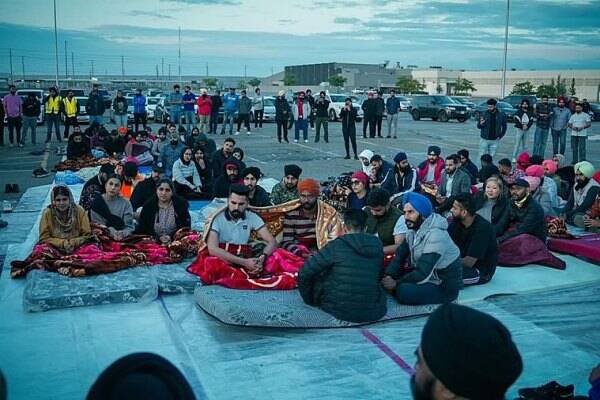 A round-a-clock dharna with the affected students – around three dozen of them who were set to be sent back to India, and many more who were victims of the fraud — seemed the only way to halt the deportations. (Photo credit: NSN Peel)
A round-a-clock dharna with the affected students – around three dozen of them who were set to be sent back to India, and many more who were victims of the fraud — seemed the only way to halt the deportations. (Photo credit: NSN Peel)
Recalling what seemed to be the lowest point in the protests — the beginning, when only four students had turned up at the plaza parking lot – Deep Hajra, an NSN volunteer, said Lovepreet Singh, a student whose expulsion was scheduled for June 13, had asked him: “Kujj banuga protest da (Will it work)?”
“The turnout didn’t meet his expectation and Lovepreet looked worried,” Hajra told The Indian Express. “I didn’t know then if it (the protest) would work or not, whether he would be allowed to stay or sent back to India. I only said one thing: ‘sab ton pehlan main ehe parking lot bharna hai (my immediate aim is to fill this parking lot with protesters).”
A scam and a call for help
Over the last couple of years, more than 100 Indian international graduates across Canada had received notifications from the Canadian Border Service Agency (CBSA), telling them that the college admission letters they had used to obtain their Canadian study visas were fraudulent. This forgery placed them at risk of deportation.
This, however, could just be the tip of the iceberg. Sources said the number of students who have entered Canada on fraudulent documents — but haven’t had their cases reviewed by the CBSA yet — could run into several thousands.
“NSN first came to know of their issue a year and a half ago,” Hajra said. “We knew the students couldn’t win this case in court, and this issue, if at all, could only be solved through pressure. But the students wanted to exercise the legal option first. So we assured them that if they ever needed us, all they had to do was give us a call and we would be there for them.”
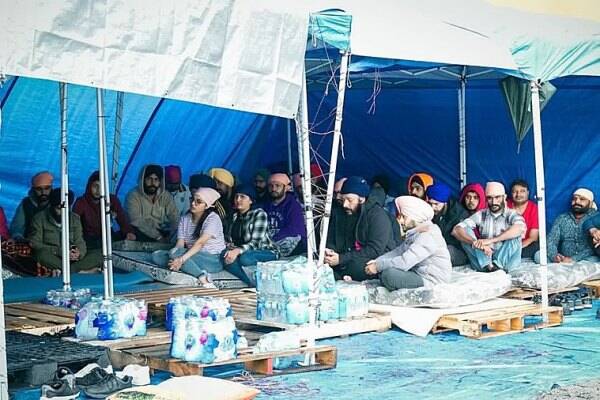 As the protesters pitched their bivouacs in the empty parking lot of a plaza near the Toronto Pearson airport, some began to wonder if they were wasting their time. (Photo credit: NSN Peel)
As the protesters pitched their bivouacs in the empty parking lot of a plaza near the Toronto Pearson airport, some began to wonder if they were wasting their time. (Photo credit: NSN Peel)
When Lovepreet got his deportation notice, he reached out to NSN. Bikram Singh, one of the founding members of the organisation, met him at a local gurudwara last month and counseled him for hours. Eventually, Bikram convinced Lovepreet that, as a last resort, he and the other students facing the same predicament should start a sit-in protest.
Over the next two weeks, NSN volunteers went full throttle, rallying crowds and attention for their cause.
Their first step was to raise awareness. NSN members, being digital natives in their 20s and 30s, knew how to work social media to their advantage. They started by creating an evocative Instagram reel urging fellow international students and the desi community to join their cause. For the video, they honed in on a topic that still resonates with the Punjabi diaspora — the farmer protests in India.
“Obviously, the farmer protests left a deep impression on us,” Hajra said. “We are Punjabis, daughters and sons, nephews and nieces of those very farmers who sat on the outskirts of Delhi for 16 months. When it was going on, we were physically here in Canada, but emotionally, we were at the Singhu border. When the January 26 Lal Qila incident happened (when protesters marching to Delhi clashed with the police), and it looked like it was game over for the kisan morcha, I sat in my car and cried that day. Because I wanted to be there to support them.”
On the night of May 28, NSN and the students decided to tap into that collective emotion once again.
A viral Instagram reel
“We made an Instagram reel saying: All those who sat in their cars and cried that day because you couldn’t go to Delhi for the farm morcha, this is your chance. Come out and support this morcha,” Hajra added.
The video went viral, resulting in well over a 100 people joining the dharna the following day. For the first time in months, the students saw a glimmer of hope.
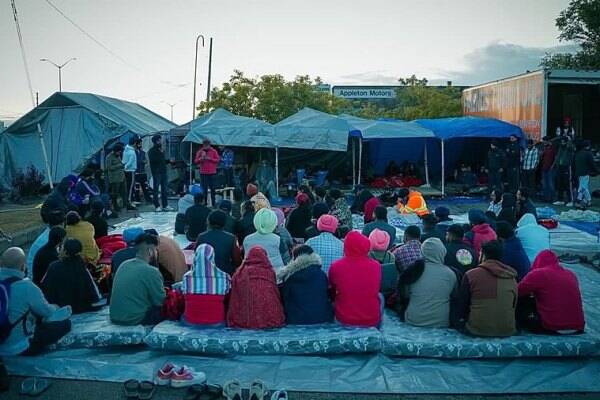 Over the last couple of years, more than 100 Indian international graduates across Canada had received notifications from the Canadian Border Service Agency (CBSA), telling them that the college admission letters they had used to obtain their Canadian study visas were fraudulent. (Photo credit: NSN Peel)
Over the last couple of years, more than 100 Indian international graduates across Canada had received notifications from the Canadian Border Service Agency (CBSA), telling them that the college admission letters they had used to obtain their Canadian study visas were fraudulent. (Photo credit: NSN Peel)
As news of the dharna spread, support poured in from various community organisations. The well-networked World Sikh Organization (WSO) utilised its political connections to raise awareness about the students’ plight, while Khalsa Aid stepped up to organise a langar. As people flocked to the protest site, Hajra’s initial aim was achieved: the once-empty parking lot was now overflowing with supporters.
However, not everyone shared the enthusiasm. The plaza management, perceiving the protest as a nuisance, called the police to disperse the demonstrators. In this crucial moment, a local councilor, who was present at the protest, stepped in and contacted Brampton Mayor Patrick Brown. After some deliberation, the plaza owners relented and allowed the protest to continue.
By now, the movement had gained enough momentum for politicians to start taking note. The Conservative Party, aware of the significance of the South Asian community’s support in the seat-rich Greater Toronto Area, brought the issue to the Canadian Parliament, urging the government to halt the deportations. Their leader, Pierre Poilievre, visited the protest site and met with the students, garnering significant media attention.
“The Conservatives know that if they want to win the next elections, Brampton is the path to victory. While supporting the students, they had their eyes on Punjabi votes,” said Harminder Dhillon, a lawyer and community activist.
Jagmeet Singh, leader of the New Democratic Party (NDP), which is propping up the minority Trudeau government, also made a visit. But the ruling Liberal Party’s leaders were conspicuous by their absence. As hope began to replace despair, the students realised that they needed to capitalise on their advantage. If the government wasn’t coming to them, they would take the protest to the government. They traveled to Toronto and demonstrated outside the office of the Federal Public Safety Minister (the equivalent of home minister), while also inviting Liberal Party MPs in Brampton and Mississauga to visit the protest site and listen to their concerns.
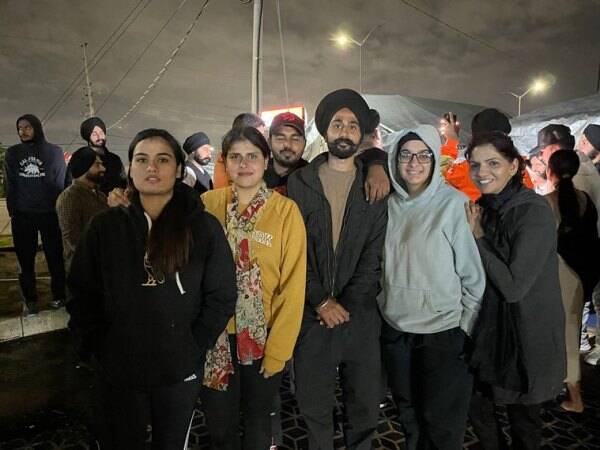 NSN volunteers went full throttle, rallying crowds and attention for their cause. NSN members, being digital natives in their 20s and 30s, knew how to work social media to their advantage. (Photo credit: NSN Peel)
NSN volunteers went full throttle, rallying crowds and attention for their cause. NSN members, being digital natives in their 20s and 30s, knew how to work social media to their advantage. (Photo credit: NSN Peel)
Finally, on June 14, the 18th day of the protest, the government gave in.
It’s the same Canadian government that had withstood the truckers’ siege of Ottawa last year, when thousands pitched their tents in front of the Parliament building. But while the truckers, who were opposing Covid-19 public safety measures, had held the capital city hostage, the students ensured public opinion didn’t go against them.
“Our struggle was legitimate, and we didn’t want to discredit it by blocking roads or doing something that disrupted people’s lives,” said Bikram, one of the first members to join NSN. “We knew if we could maintain discipline, have people on our side and not against us, we had a chance of winning.”
Farm protests to labour rights
The NSN traces its origins to the 2020-21 farmers’ protests in India against three controversial agriculture laws. As the protests dragged on at the borders of Delhi, Indian students in Canada, mostly those from Punjab, would routinely organise solidarity protests. It was during these demonstrations that the future members of NSN would first cross paths.
While the farmers’ protest served as an inspiration, the circumstances in Canada were ripe for the movement to grow organically. Those who participated in the solidarity protests would exchange notes on some of the most pressing problems faced by the international student community – poverty, labour exploitation, inadequate housing, immigration fraud and a string of suicides.
“All of those stories were circulating among people involved in the solidarity protests. So they decided that we must support the farmers at the Delhi borders, but we must also support the students facing hardships here. That set the ball rolling,” explained Navyug Gill, a professor of history at William Paterson University in New Jersey who has followed the NSN movement from its early days.
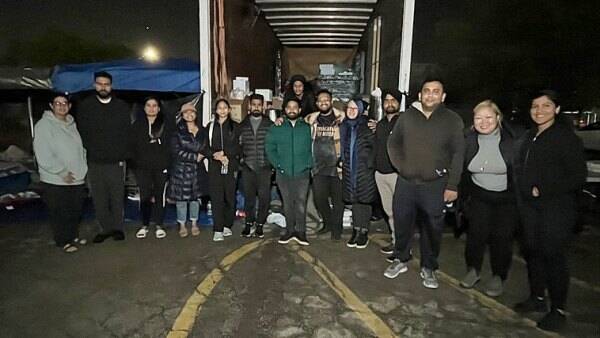 The NSN finally compelled dozens of employers to pay back tens of thousands of dollars in arrears to scores of students. (Photo credit: NSN Peel)
The NSN finally compelled dozens of employers to pay back tens of thousands of dollars in arrears to scores of students. (Photo credit: NSN Peel)
Among the first issues the NSN tackled was labour issues among students. Several young students who worked part-time had fallen prey to unscrupulous desi employers who withheld their wages. NSN began to mobilise protests against these employers, publicly naming and shaming them, while shouting “lutt band karo” (stop the theft) in front of their residences or offices.
The NSN finally compelled dozens of employers to pay back tens of thousands of dollars in arrears to scores of students. These experiences also helped NSN refine their tactics, many of which they would later employ effectively in their battle against deportations.
“We had many aces up our sleeves,” said Hajra. “When we came to know that (NDP leader) Jagmeet Singh was coming to the protest site and that there would be media coverage, we told the girls who were facing deportation to tie him a rakhi as soon as he arrived. They were supposed to tell him that they don’t have their parents or brothers here, and that he would now have to protect them.”
They didn’t need to execute this plan because by the time Jagmeet arrived, it was evident that the protest was gaining momentum and achieving success.
The group had also planned to launch a hunger strike. Hajra said, “Canada portrays itself as a country that cares about human rights above all. We were thinking of putting that to the test. I was in India when the Anna Hazare movement happened, and I had seen how effective his hunger strike was. We were prepared to do that if the government didn’t budge.”
‘Just a WhatsApp group of friends’
Navyug Gill, the history professor, agrees that with their ingenuity and resourcefulness, the international students had introduced Canadians to a new protest manual.
“Governments are generally very myopic and can’t think outside the script that they have inherited,” said Gill, who specialises in modern South Asia, labour history, and agrarian studies. “And so when a situation like this happened, where people were actually not following the script, they were using their creativity, collective energy, and community support to do something different, the government was absolutely shocked and was scrambling to try to make sense of an unprecedented situation.”
On June 14, as remnants of the protest were being cleared, a sense of calm settled over the site – tents were being folded, and cars quietly pulled out of the parking lot. Reflecting on the journey, Bikram said he misses the camaraderie of the protest. A car mechanic, he would go back to his garage. Hajra would return his full attention to his automotive parts business.
The protests are often the only meeting point for NSN members since it doesn’t exist formally.
“NSN is a movement, not an organisation. There’s no NSN on paper,” says Bikram. “While we can mobilize volunteers and students when needed – as you saw in the student protest –at the core of it, we are just a WhatsApp group of a couple of dozen friends.”


